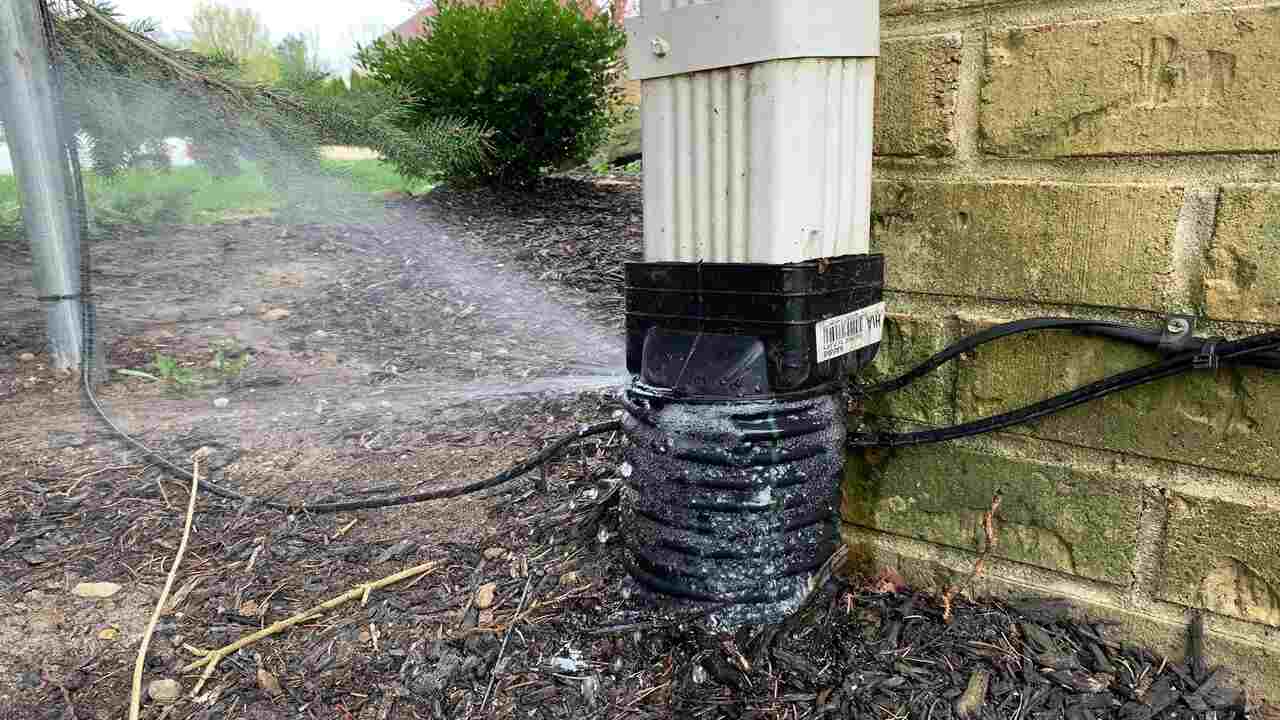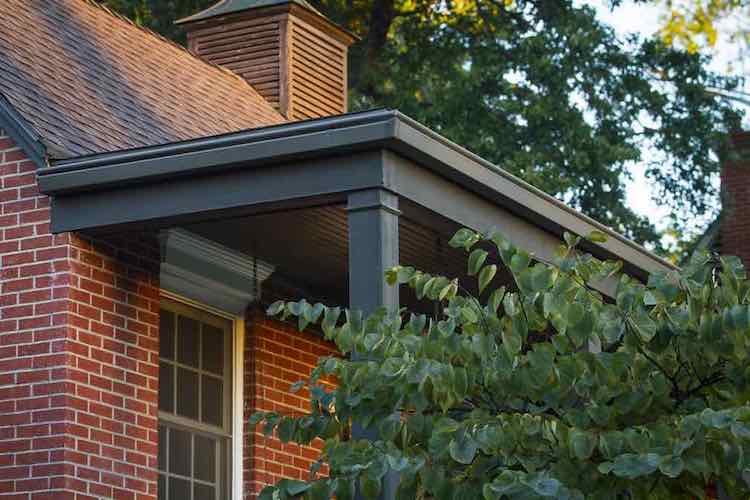Absolutely! Dealing with drainage problems around downspouts and gutters is crucial, especially for places like Liberty Heritage Nursery Farm. Proper water management ensures your plants thrive and structures remain protected. At Liberty Heritage, we understand the importance of efficient drainage to safeguard your investments and maintain a healthy environment. Whether it’s redirecting water flow, installing optimal gutter systems, or troubleshooting existing issues, we’re here to help you navigate through these challenges with tailored solutions that fit your specific needs.
Understanding Downspouts and Gutters
What Are Downspouts and Gutters?
Downspouts and gutters are essential components of a building’s roofing system designed to channel rainwater away from the foundation and landscaping. Gutters collect water that runs off the roof, while downspouts direct this water down and away from the building.
Importance of Proper Drainage
Proper drainage is crucial to prevent water accumulation that can lead to foundation damage, erosion, and plant health issues. Effective landscape drainage solutions, such as grading, French drains, and rain gardens, vary in cost associated with landscape drainage depending on factors like yard size, soil type, and chosen method. Costs can range from a few hundred to several thousand dollars, but investing in professional assessment and installation ensures long-term protection and enhances the aesthetics and functionality of your outdoor space.
Proper drainage around downspouts and gutters is critical for several reasons:
Preventing Water Damage:
Water pooling around the foundation can lead to structural damage, mold growth, and basement flooding.
Protecting Landscaping:
Redirecting water away from flower beds, lawns, and agricultural fields prevents soil erosion and maintains soil health.
Preserving Building Integrity:
Continuous exposure to water can deteriorate building materials over time, compromising their structural integrity.
Common Drainage Issues
Common drainage issues in home lawns of Liberty Township include pooling water, soggy spots, and erosion around foundations. To identify and fix these drainage issues, look for standing water after rain, soil erosion patterns, and areas where grass struggles to grow. Solutions may involve grading to redirect water flow, installing French drains, or using permeable materials. Addressing these issues promptly improves lawn health, prevents structural damage, and enhances the overall landscape aesthetics in Liberty Township.
1. Clogging

Issue:
Debris such as leaves, twigs, and dirt can accumulate in gutters, blocking the flow of water.
Solution:
Regular gutter cleaning is essential. Install gutter guards to prevent debris buildup while allowing water to flow freely.
2. Improper Slope
Issue:
Gutters that are not sloped correctly may not drain water properly, causing overflow or stagnant water.
Solution:
Ensure gutters have a slight slope towards the downspouts (approximately 1/4 inch per 10 feet). Adjust as necessary during installation or maintenance.
3. Downspout Location
Issue:
Downspouts that discharge water too close to the foundation can lead to pooling and foundation damage.
Solution:
Extend downspouts at least 3 feet away from the foundation. Consider using downspout extensions or splash blocks to direct water further away.
4. Inadequate Capacity
Issue:
Gutters and downspouts may not be able to handle large volumes of water during heavy rainfall, leading to overflow.
Solution:
Install larger or additional downspouts and gutters to accommodate higher water volumes. Consider upgrading to seamless gutters for improved durability and capacity.
Practical Solutions for Drainage Issues
1. Rainwater Harvesting Systems
Rainwater harvesting systems capture and store rainwater for reuse in landscaping, reducing reliance on municipal water and conserving resources. These systems typically include collection barrels, gutter diverters, and filtration systems to ensure water quality. Coupled with landscaping services like irrigation design and drought-resistant plant selection, rainwater harvesting enhances sustainable practices and reduces water bills. Implementing these solutions not only supports eco-friendly initiatives but also promotes lush, resilient landscapes in Liberty Township and beyond.
Description:
Collecting rainwater from downspouts for later use in irrigation or other agricultural practices.
Installation:
Place rain barrels or cisterns at the base of downspouts to capture and store rainwater. Use a filtration system to remove debris before storage.
Benefits:
Reduces water consumption, provides a sustainable water source for plants, and minimizes runoff into storm drains.
2. French Drains
French drains are trench-like drainage systems filled with gravel or rock and lined with perforated pipe to redirect groundwater away from areas prone to water accumulation, such as basements or low-lying yards. They effectively alleviate standing water issues by facilitating water movement into the drain and preventing saturation of soil. French drains are versatile and can be tailored to fit various landscape sizes and conditions, making them a popular choice for homeowners seeking reliable and long-term water management solutions.
Description:
Underground drainage systems designed to redirect water away from problem areas.
Installation:
Dig a trench filled with gravel and a perforated pipe to collect and redirect water. Cover with soil and landscaping fabric to prevent clogging.
Benefits:
Effectively manages excess water, prevents soil erosion, and protects landscaping and building foundations.
3. Green Roofs

Description:
Roofing systems with vegetation planted on top to absorb rainwater and reduce runoff.
Installation:
Modify existing roofs or install new structures with a waterproof membrane, drainage layer, soil, and plants.
Benefits:
Improves insulation, reduces urban heat island effect, and enhances biodiversity while managing stormwater runoff.
Implementing Effective Drainage Solutions
Implementing effective drainage solutions involves assessing the landscape’s slope and soil type to determine the best approach, such as installing French drains, dry wells, or rain gardens. Properly placed downspout extensions and strategic grading redirect water away from vulnerable areas, preventing erosion and waterlogging. Choosing permeable materials for walkways and driveways also aids in water absorption. By integrating these solutions, homeowners in Liberty Township can enhance property resilience, curb appeal, and long-term sustainability.
1. Assessing Your Property
Start by evaluating your property’s current drainage system.
Inspect Gutters and Downspouts:
Look for signs of damage, clogging, or inadequate capacity.
Check Slope and Alignment:
Ensure gutters are sloped correctly towards downspouts and away from the foundation.
Evaluate Landscaping:
Identify areas prone to water pooling or erosion.
2. Planning and Design
Based on your assessment, develop a drainage plan that addresses specific issues:
Design Solutions:
Determine the best drainage solutions based on your property layout, climate, and budget.
Consider Local Regulations:
Check local building codes and regulations regarding drainage system installations and modifications.
3. Installation and Maintenance
Once you’ve chosen your drainage solutions, follow these steps:
Professional Installation:
Hire experienced contractors for complex installations like French drains or green roofs.
Regular Maintenance:
Schedule routine inspections and maintenance to keep gutters, downspouts, and drainage systems in optimal condition.
FAQs
How to improve gutter downspout drainage?
Improving gutter downspout drainage involves several key steps. First, ensure downspouts are clear of debris and positioned to direct water away from the foundation. Second, consider installing gutter extensions or splash blocks to further guide water flow. Lastly, evaluate the grading around your property to ensure water slopes away from buildings, preventing pooling and potential water damage. These measures collectively enhance drainage efficiency and protect your property from water-related issues.
How do you fix a clogged downspout drain?
To fix a clogged downspout drain, start by removing any visible debris or leaves from the top of the downspout. Next, use a plumber’s snake or a pressure washer to clear any blockages from inside the downspout. Finally, flush the downspout with water to ensure it’s flowing freely and consider installing a leaf guard or screen to prevent future clogs. These steps help maintain effective drainage and prevent water damage around your home or property.
How do you fix erosion under downspouts?
To fix erosion under downspouts, start by extending the downspout to direct water further away from the affected area. Next, consider installing a splash block or a gravel-filled trench to absorb and disperse water flow more effectively. Finally, plant grass or ground cover around the area to stabilize the soil and prevent further erosion. These steps help mitigate erosion issues caused by concentrated water flow from downspouts.
How do you fix a leaking gutter downspout?
To fix a leaking gutter downspout, first inspect the area for any visible cracks or holes in the downspout. Use a sealant appropriate for the material of your downspout (such as silicone or gutter sealant) to patch any leaks. Ensure the sealant is applied evenly and allow it to dry thoroughly before testing for leaks again. This approach effectively addresses minor leaks and helps maintain the integrity of your gutter system.
How do you manage water from gutter downspouts?
Managing water from gutter downspouts involves directing it away from foundations and sensitive areas. Options include using downspout extensions, splash blocks, or underground drainage systems. Proper maintenance, such as clearing debris regularly and ensuring downspouts are securely attached, helps prevent issues like leaks and erosion. These steps promote efficient water flow management and protect your property from water damage.
Conclusion
Ensuring effective drainage around downspouts and gutters is essential for maintaining the health and longevity of your property, whether it’s a residential home or an agricultural farm like Liberty Heritage Nursery Farm. By understanding common drainage issues and implementing practical solutions such as rainwater harvesting, French drains, and green roofs, you can mitigate water damage, protect landscaping, and promote sustainable water management practices.
At Liberty Heritage, we’re committed to helping you navigate through drainage challenges with expertise and tailored solutions that meet your unique needs. Whether you’re dealing with clogged gutters, poor slope alignment, or insufficient drainage capacity, our team is here to provide guidance and support every step of the way.
